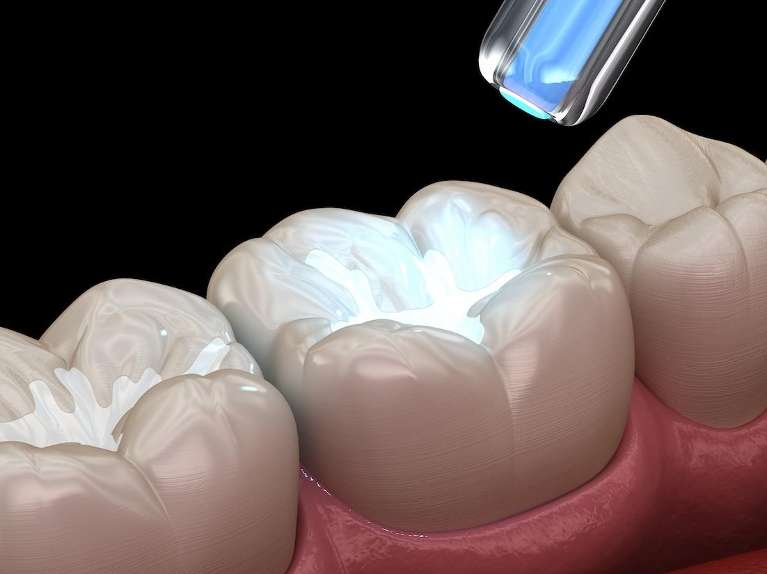
Dental sealants might sound like a small dental tool, but their impact on oral health is significant. Imagine a shield protecting your teeth from the relentless attack of cavities—this is precisely what dental sealants offer. They are designed to cover the deep grooves and fissures in the back teeth, which are often hard to clean and prone to decay. This simple yet powerful preventive measure can make a world of difference, especially for children and teenagers who are at high risk for cavities. Curious about how effective these tiny shields can be and if they’re right for you or your family? Keep reading to discover everything you need to know about dental sealants and their role in cavity prevention.
What Are Dental Sealants?
Dental sealants are made of a plastic material that bonds to the grooves and pits of the teeth. When applied, they create a smooth surface, making it harder for plaque and food particles to settle in these hard-to-reach areas. This simple but effective barrier helps reduce the risk of decay. Sealants are most commonly used on molars, which have deep grooves where food and bacteria can easily get trapped.
How Do Sealants Work?
Sealants work by filling in the grooves and fissures on the chewing surfaces of the back teeth. These areas are particularly vulnerable to cavities due to their complex structure, which makes them difficult to clean thoroughly with a toothbrush alone. By creating a smooth, sealed surface, sealants prevent bacteria and food particles from accumulating and causing tooth decay.
Who Should Get Dental Sealants?
Children and teenagers are the primary candidates for dental sealants. As children grow, their permanent molars emerge, and these teeth are especially susceptible to cavities. Applying sealants as soon as these teeth come in can significantly reduce the risk of decay. However, adults can also benefit from sealants if they have deep grooves in their teeth that are prone to cavities.
The Application Process
Applying dental sealants is a quick and painless procedure that typically takes just a few minutes per tooth. The process begins with the dentist cleaning and drying the tooth surface. A special solution is then applied to prepare the tooth for the sealant. Once the tooth is ready, the sealant is painted onto the surface and hardened using a special light. The entire process is usually completed in one visit, and there’s no recovery time needed.
How Long Do Dental Sealants Last?
Dental sealants are designed to last for several years, but their lifespan can vary based on oral hygiene practices and dietary habits. Regular dental check-ups are essential to ensure that the sealants are intact and functioning properly. If a sealant becomes chipped or worn, it can be replaced during a routine dental visit.
Benefits of Dental Sealants
Prevention of Cavities: The primary benefit of dental sealants is their ability to prevent cavities. By covering the grooves and pits of the teeth, sealants provide a barrier against plaque and bacteria.
Cost-Effective: Compared to the cost of treating cavities and related dental issues, sealants are a cost-effective preventive measure. They reduce the need for more extensive dental work down the line.
Durability: Sealants are durable and can last for several years with proper care. They are an excellent long-term investment in oral health.
Ease of Application: The application process is quick and non-invasive, making it a suitable option for both children and adults.
Are There Any Risks?
Dental sealants are generally safe, but as with any dental procedure, there are potential risks. Some individuals may experience minor discomfort or sensitivity following the application. Additionally, sealants may occasionally chip or wear down over time, which can reduce their effectiveness. Regular dental visits are essential to monitor the condition of the sealants and ensure they are providing the intended protection.
The Role of Oral Hygiene
While dental sealants are highly effective, they are not a substitute for good oral hygiene. Brushing and flossing regularly are crucial for maintaining overall dental health. Sealants work best when combined with a comprehensive oral care routine, including regular check-ups with your dentist.
Choosing the Right Dentist
Selecting the right dentist for sealant application is important to ensure that the procedure is done correctly. Look for a dentist with experience in preventive care and a track record of successful sealant applications. If you’re in the Encino area, seeking out a qualified dentist in Encino can help you get the best care possible for your dental needs.
Maintenance and Care
Maintaining dental sealants involves routine oral hygiene practices. Regular brushing and flossing, along with periodic dental check-ups, are essential to keep sealants functioning properly. During your dental visits, your dentist will check the condition of your sealants and recommend any necessary adjustments or replacements.
Dental sealants are a highly effective preventive measure for reducing the risk of cavities, especially in children and teenagers. By creating a protective barrier on the chewing surfaces of the teeth, sealants help to prevent decay and maintain oral health. For those in Encino, CA, exploring options for dental sealants can be a valuable step in safeguarding your teeth from cavities. Regular dental visits and good oral hygiene practices will help ensure that your sealants remain effective and that your teeth stay healthy for years to come.